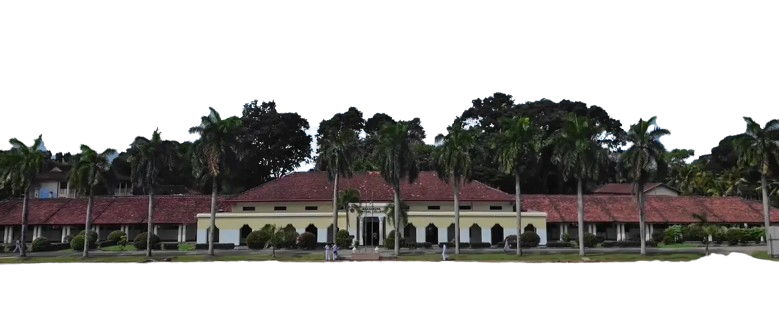
HISTORY OF CENTRAL COLLEGE, IBBAGAMUWA
Ibbagamuwa (“elephant habitat”) is a small hamlet located 12 kilometers away from Kurunegala Town, in the North Western Province of Sri Lanka. This area has been populous and rich in cultivation since the period of King Parakramabahu the Great, who was responsible for building many tanks in the dry zone for paddy cultivation. One of the King’s resourceful ministers, Badhalaththali, built a large tank near Ibbagamuwa, declared the region a cultivation area, and settled thousands of farmer families there.
The tank was named after the minister, Badhalaththaliwapi, which is now known as Batalagoda Wewa. A stone inscription standing near the spill on the tank bund records the restoration of the tank by Queen Kalyanawathie (1202–1208 A.D.).
The people of the area, predominantly farmers, cultivated their lands with the help of water from the Batalagoda Tank (formerly Badhalaththaliwapi). Wealthy landowners, closely connected to the king’s court, maintained the administration during that feudal era, while the farmers toiled hard to produce good harvests. Thus, Ibbagamuwa grew as the adjoining village of the Batalagoda Tank, and a small hamlet gradually developed there after the construction of main roads in the 19th century.
This was a transitional period in which the country was striving to develop in line with the modern standards of the Western world. With that objective, the contemporary Western education system was introduced to Ceylon. To fulfill this goal, the English rulers established elite English missionary schools in major towns to educate the children of wealthy families who could afford the high fees.
Poor children, however, were given opportunities for basic free education in Sinhala or Tamil medium at village schools. As a result, English-educated individuals were absorbed into the administration and higher positions in government or the private sector, while Sinhala and Tamil scholars became local leaders serving their villages. At the beginning of the 20th century, Ibbagamuwa Government Sinhala Mixed School was one such village center for free education, located at Ibbagamuwa Junction, between two roads.
The exact date of the school’s establishment is unknown; nevertheless, written records (log books) are available from 1914. The earliest surviving entry is a report written by a school inspector.
Mr. C. W. W. Kannangara was the Minister of Education during the post-war period. He was the first political leader to explore the possibility of providing free English education to intelligent but underprivileged children in rural areas. This was a bold and audacious initiative, which many of his colleagues and contemporaries opposed, dismissing the idea as impossible. However, Mr. Kannangara’s vision eventually became a reality when the scheme of Central Colleges was approved by the State Council. Before achieving this goal, he had to overcome numerous obstacles, but through his enthusiasm and determination, he was able to establish the country’s first Central School in 1941.
In the years that followed, a total of 52 Central Schools were established across the island. Each Central College was essentially the transformation of an old village school into a high-grade English education center. In this process, the Ibbagamuwa Government Sinhala Mixed School was selected as the site for one of these Central Schools. The idea was strongly supported by Colonel Sir John Kotelawala, the Member of Parliament for Kurunegala, who worked closely with the Minister of Education to establish the Central School in his electorate. Thus, on 3rd February 1941, Ibbagamuwa Central College was officially established.
The Log Book of the school records this special event as follows:

In accordance with this significant note, Ibbagamuwa Central college should be the second Central College to be established after Matugama Central college, which was the first to be declared, situated in the Hon. Minister’s electorate itself. Elevated as Ibbagamuwa Central College, the village school functioned in its traditional style for the next two years, before it was really transformed into an English educational institution. The main reason was that there were no teachers for English medium education.
The Head Master of the Sinhala School, Mr. Welagedara, continued to be the head of the institution until replacement was made. The existing Mixed School functioned as usual in one part of the buildings, and the Central College on the other section of the same site. Generally, the Central Colleges admitted only pupils from grade 6 and upwards. These include those who were selected on the Government Scholarship Examination (known as Scholars), and also those who passed the selective entrance examination held by the Central College (day-scholars).
By the year 1942 Scholars were selected from various schools of the region and were admitted to the Central Colleges. The expected English education, however, was not fully introduced due to lack of teachers. Mr. C. W. W. Kannnangara advertised for posts of Principles of the newly established Central Colleges and the response was remarkable. There were many London B. A. Graduates anticipating the posts of Principal in these new establishments.
The minister personally interviewed and selected the new principal. A master from Saint Peters College Colombo, a London B. A. Graduate, Mr. P. M. Jayatilaka, was among the applicants. His educational and extra curricular activity record satisfied the minister and immediately appointed him as the principal of Ibbagamuwa Central College.

Ststue of Mr. P. M. Jayatilaka
